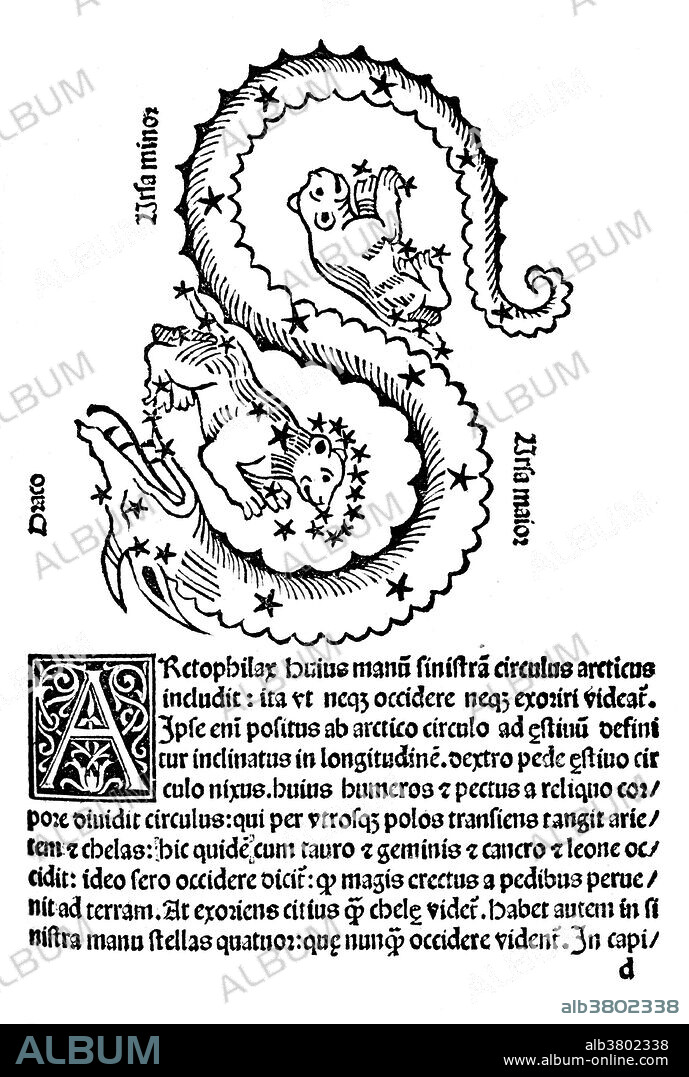alb3802338
Draco Constellation, 1482

|
Añadir a otro lightbox |
|
Añadir a otro lightbox |



¿Ya tienes cuenta? Iniciar sesión
¿No tienes cuenta? Regístrate
Compra esta imagen

Título:
Draco Constellation, 1482
Descripción:
Ver traducción automática
Draco is a constellation in the far northern sky. Its name is Latin for dragon. Draco is circumpolar (that is, never setting) for many observers in the northern hemisphere. It was one of the 48 constellations listed by the 2nd century astronomer Ptolemy, and it remains among the 88 modern constellations defined by the International Astronomical Union. The north pole of the ecliptic is in Draco. In Greco-Roman legend, Draco was a dragon killed by the goddess Minerva and tossed into the sky upon his defeat. The dragon was one of the Giant Titans, who battled the Olympic gods for ten years. As Minerva threw the dragon, it became twisted on itself and froze at the cold North Celestial Pole before it could right itself. Poeticon astronomicon is a star atlas whose authorship is disputed. The work was originally attributed to the Roman historian Gaius Julius Hyginus (64 BC - AD 17). The book lists most of the constellations in the same order as Ptolemy's Almagest (2nd century AD) which has led many to believe that a more recent Hyginus created the text. The Poeticon astronomicon was not formally published until 1482, by Erhard Ratdolt. He commissioned a series of woodcuts, but the relative positions of the stars bear little resemblance to the descriptions given by Hyginus in the text or the actual positions of the stars in the sky.
Crédito:
Album / Science Source / U.S. Naval Observatory Library
Autorizaciones:
Modelo: No - Propiedad: No
¿Preguntas relacionadas con los derechos?
¿Preguntas relacionadas con los derechos?
Tamaño imagen:
3300 x 4901 px | 46.3 MB
Tamaño impresión:
27.9 x 41.5 cm | 11.0 x 16.3 in (300 dpi)
Palabras clave:
ARTE • ASTRONOMIA • ASTRONÓMICO • BLANCO Y NEGRO • CELESTE • CELESTIAL SPHERE • CELESTIAL • CIENCIA • CUERPO CELESTE • DIBUJO • DRACO • ESFERA CELESTE • FAMOSO • GRABADO EN MADERA • HISTORIA • HISTORICO • HYGINUS • ILUSTRACION • IMPORTANTE • MEDIEVAL • OBRA DE ARTE • PLANCHA DE MADERA • S. -XV • XILOGRAFIA
 Pinterest
Pinterest Twitter
Twitter Facebook
Facebook Copiar enlace
Copiar enlace Email
Email
